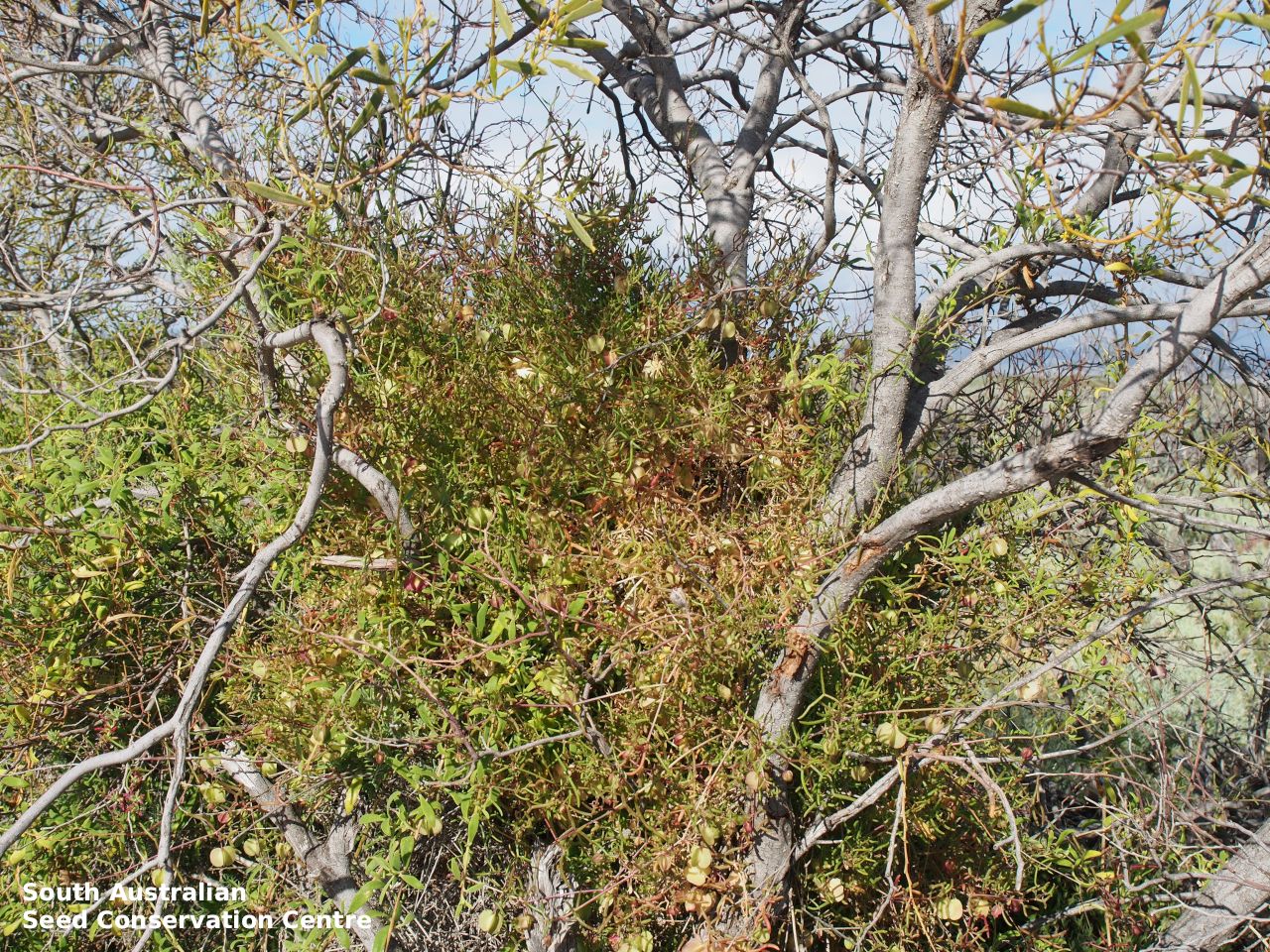
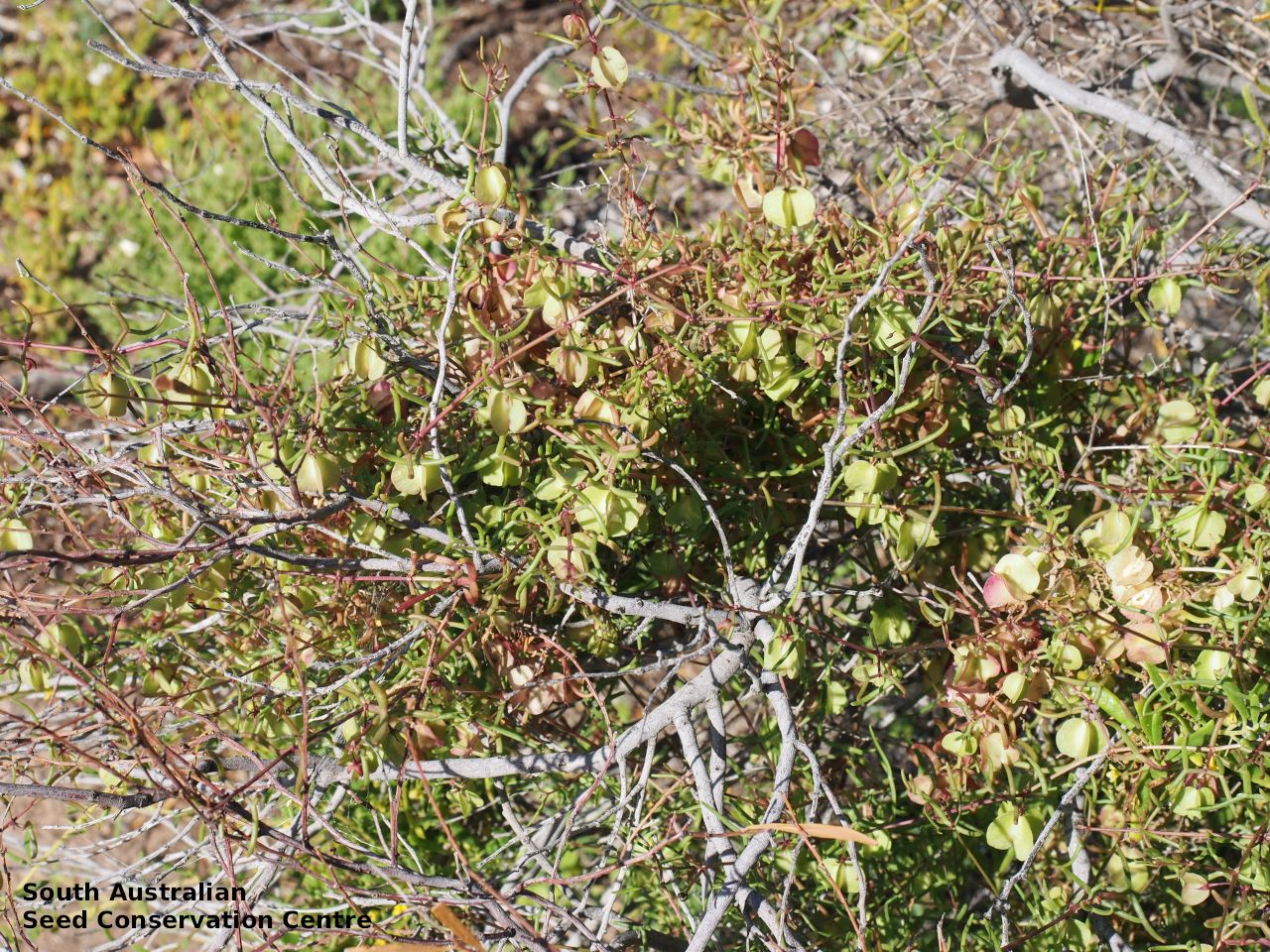
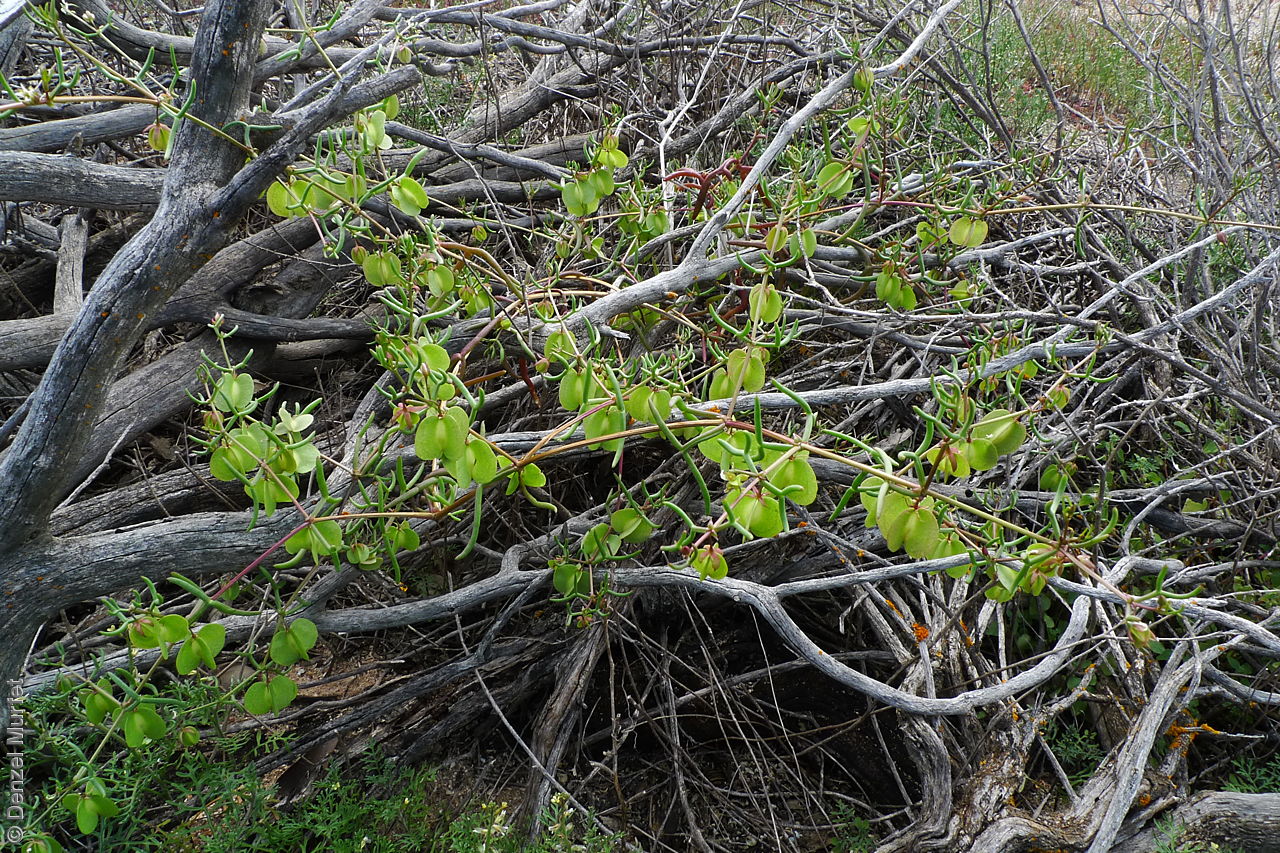
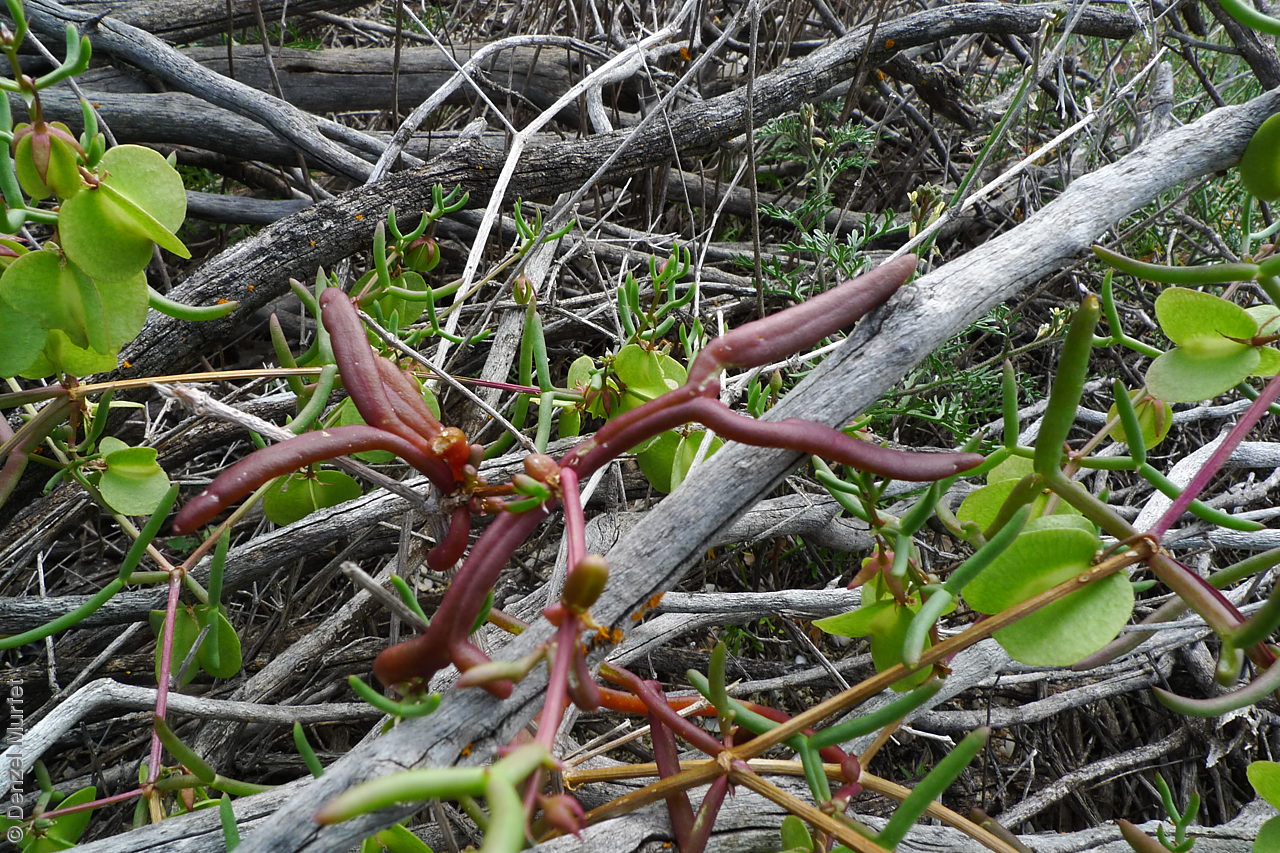
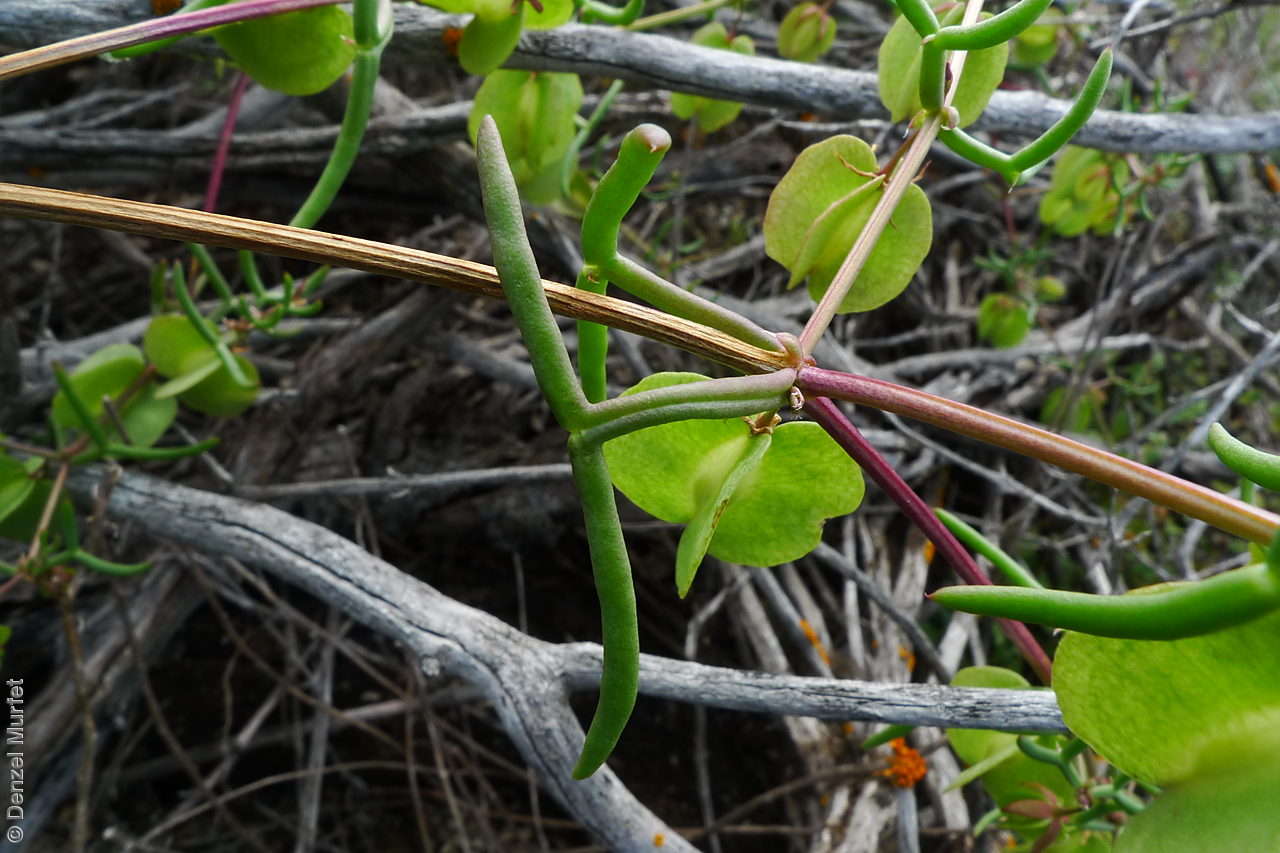
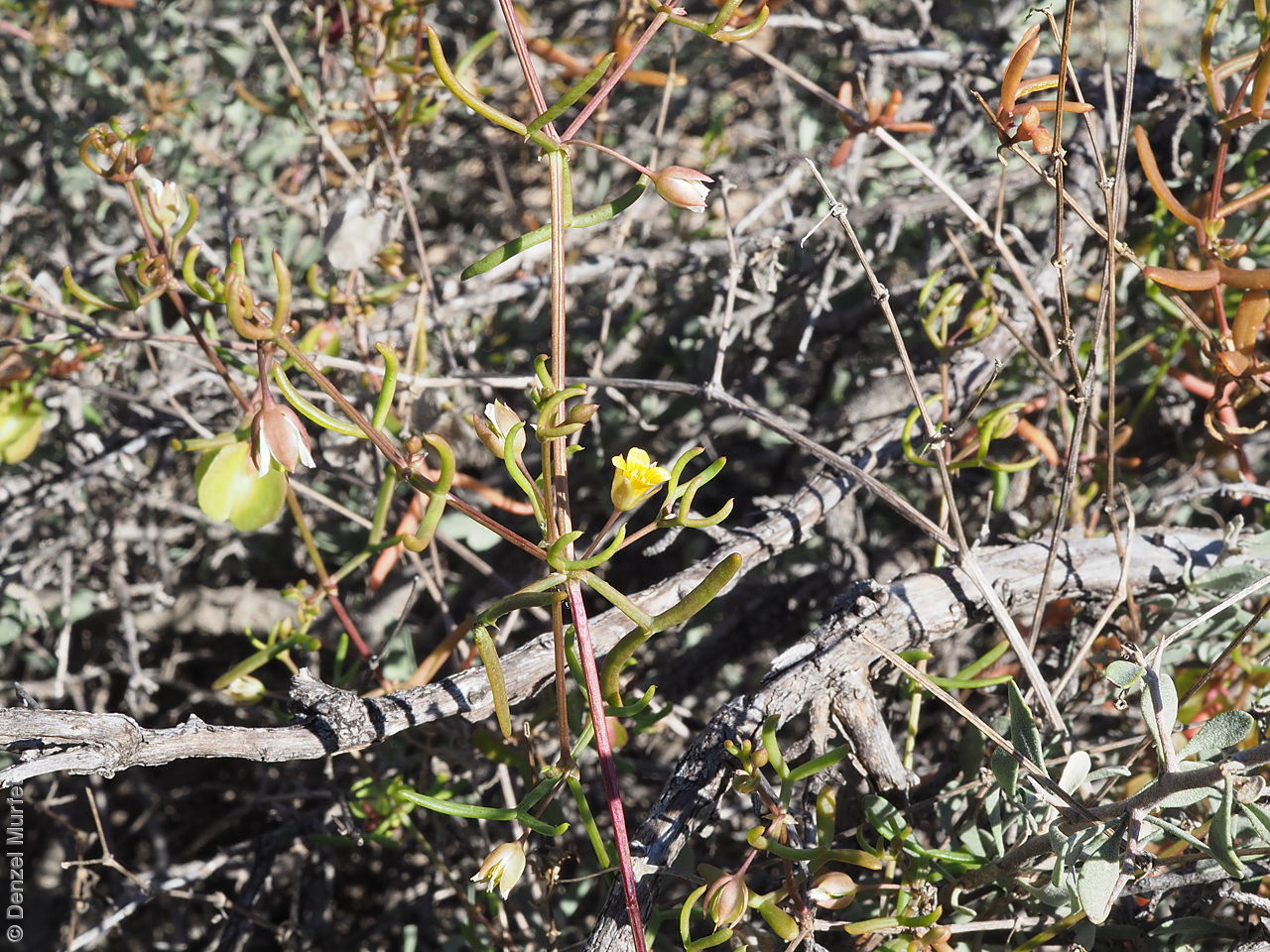
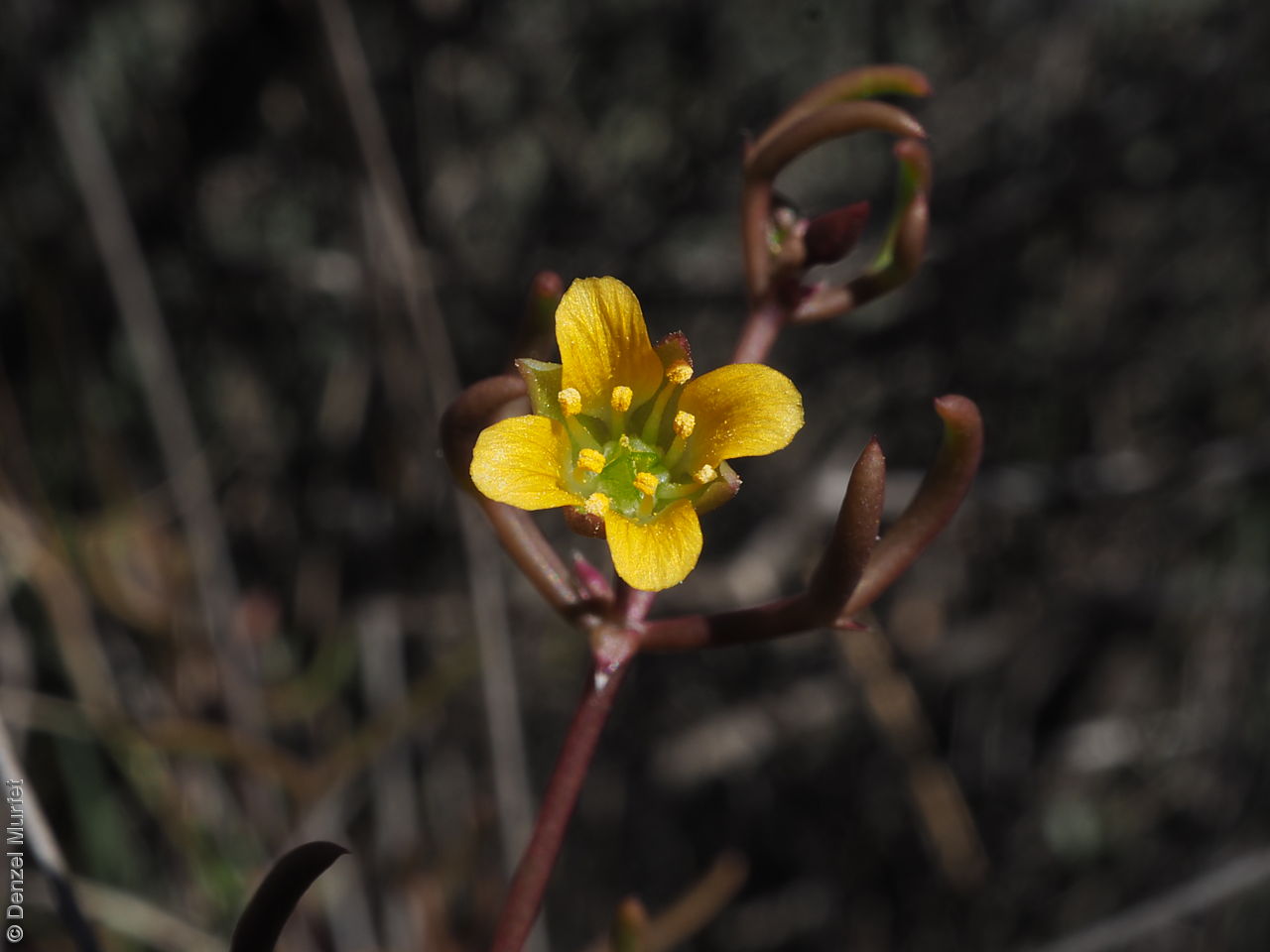
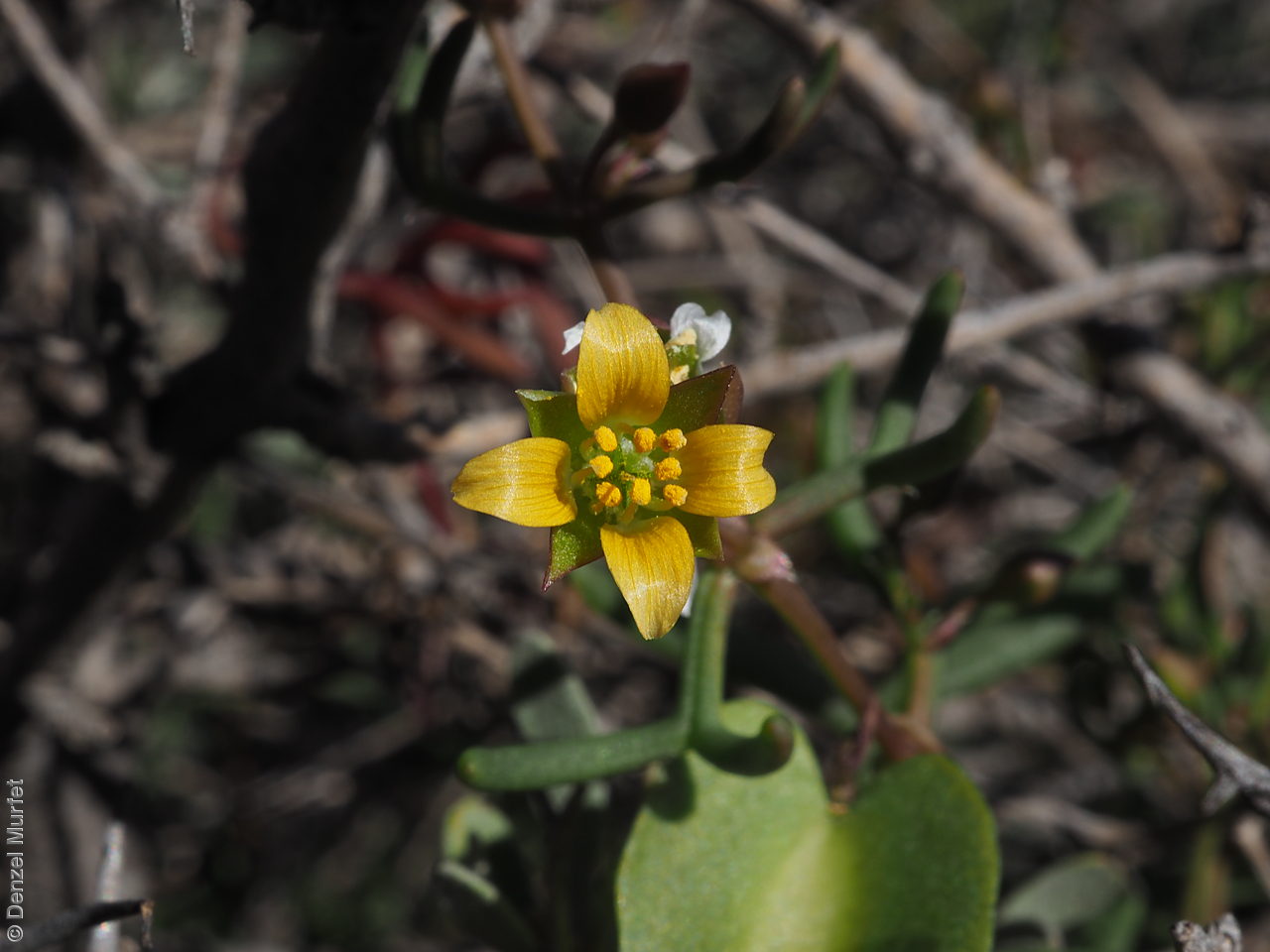
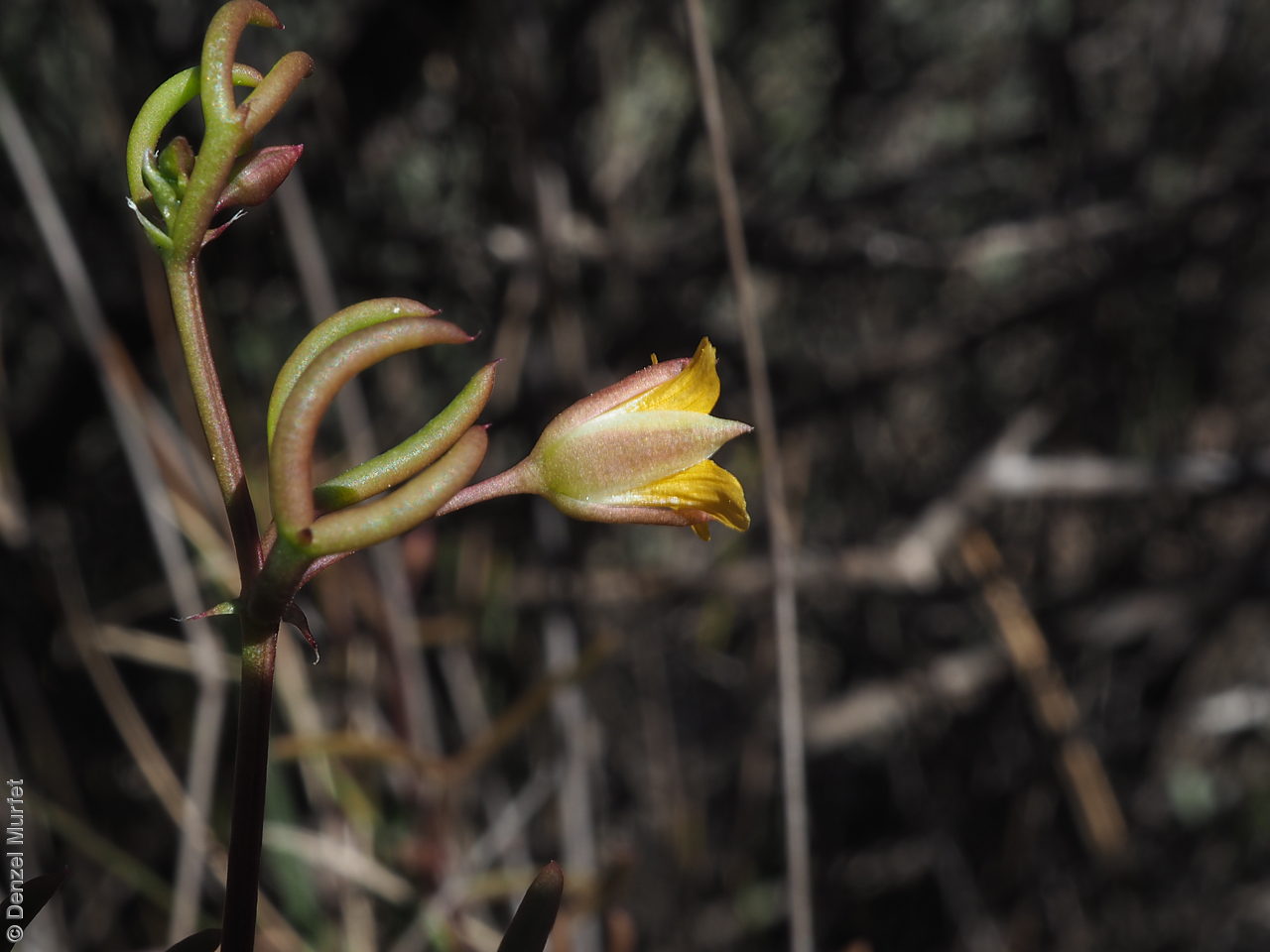
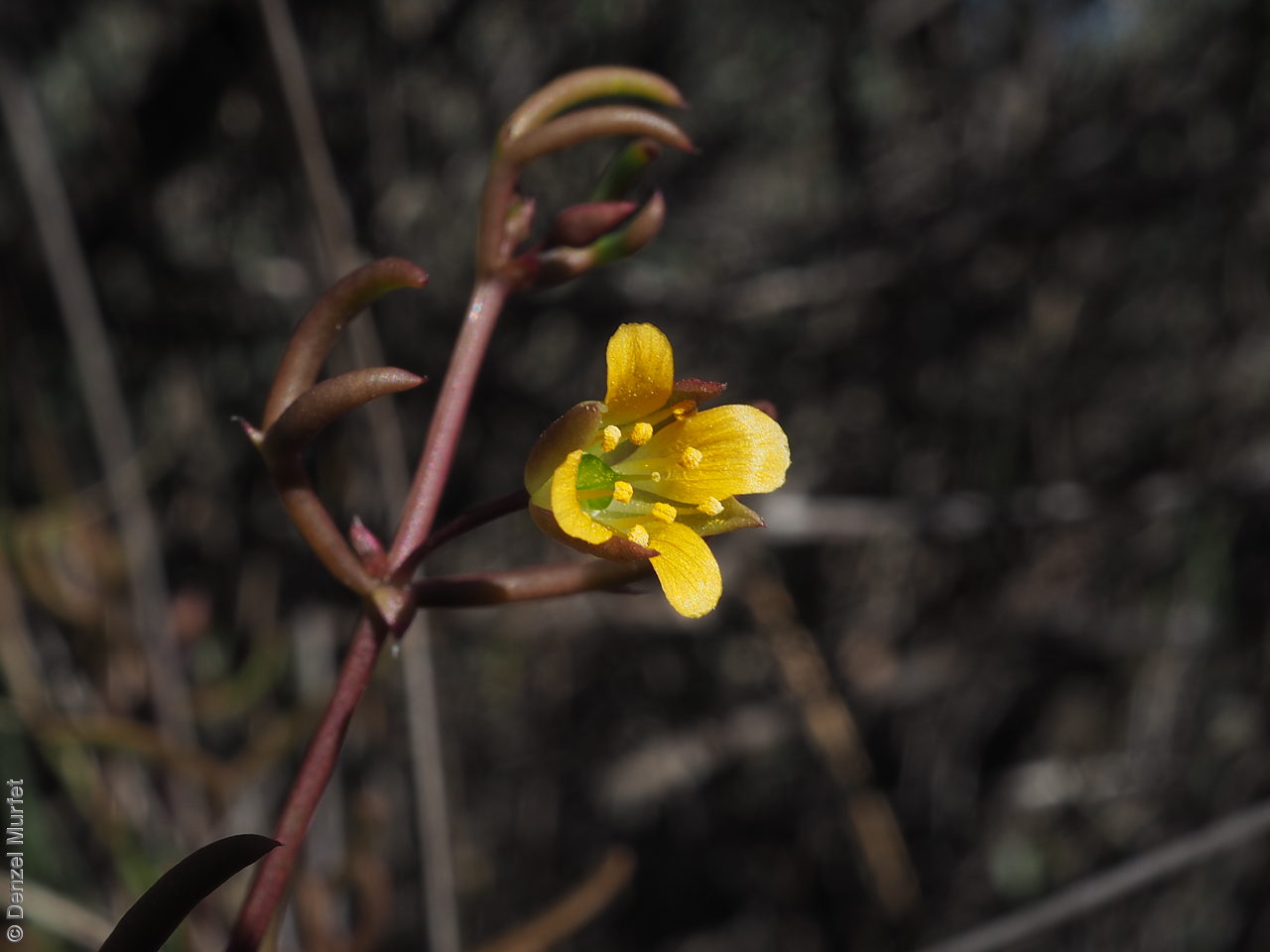
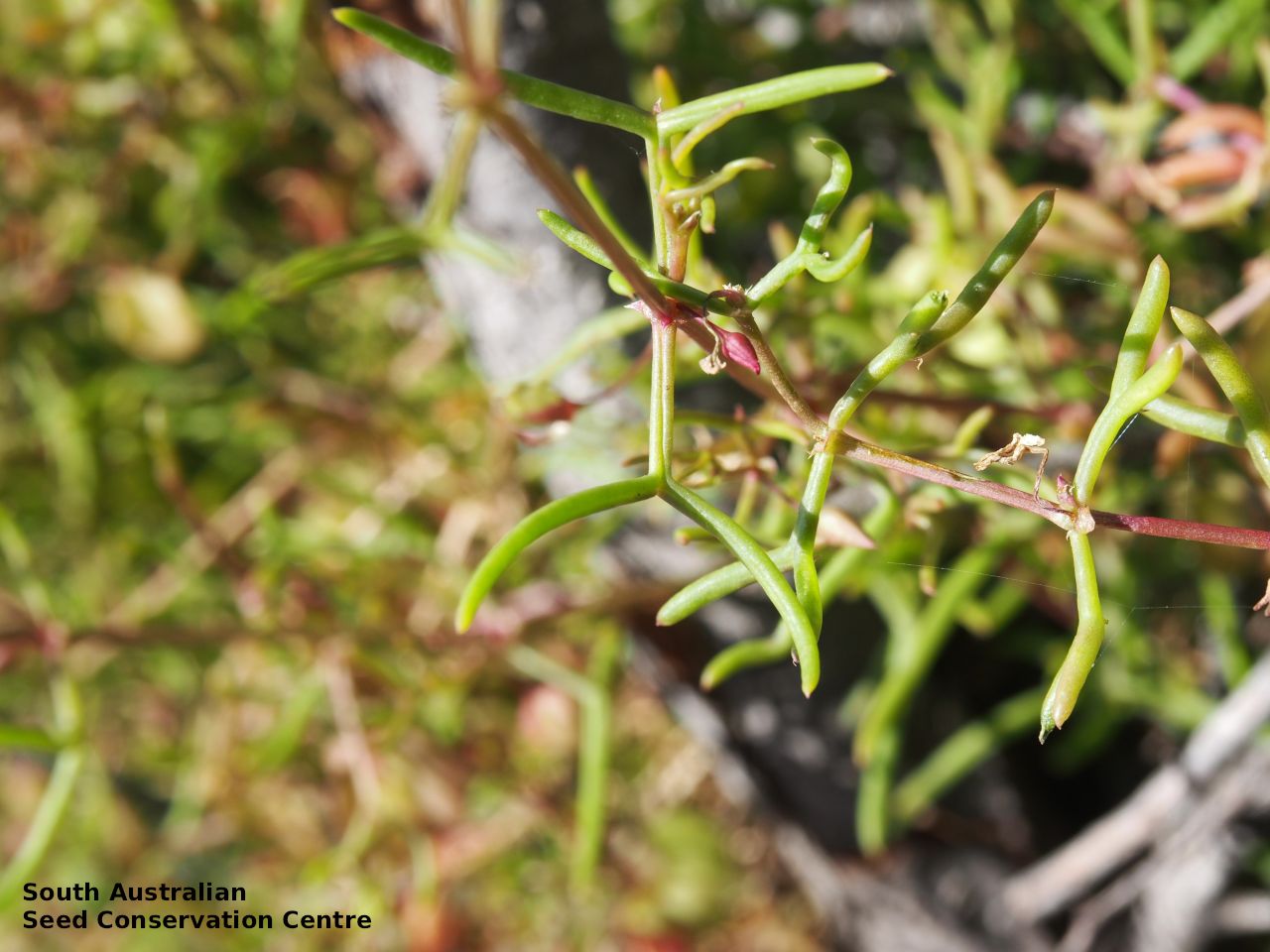
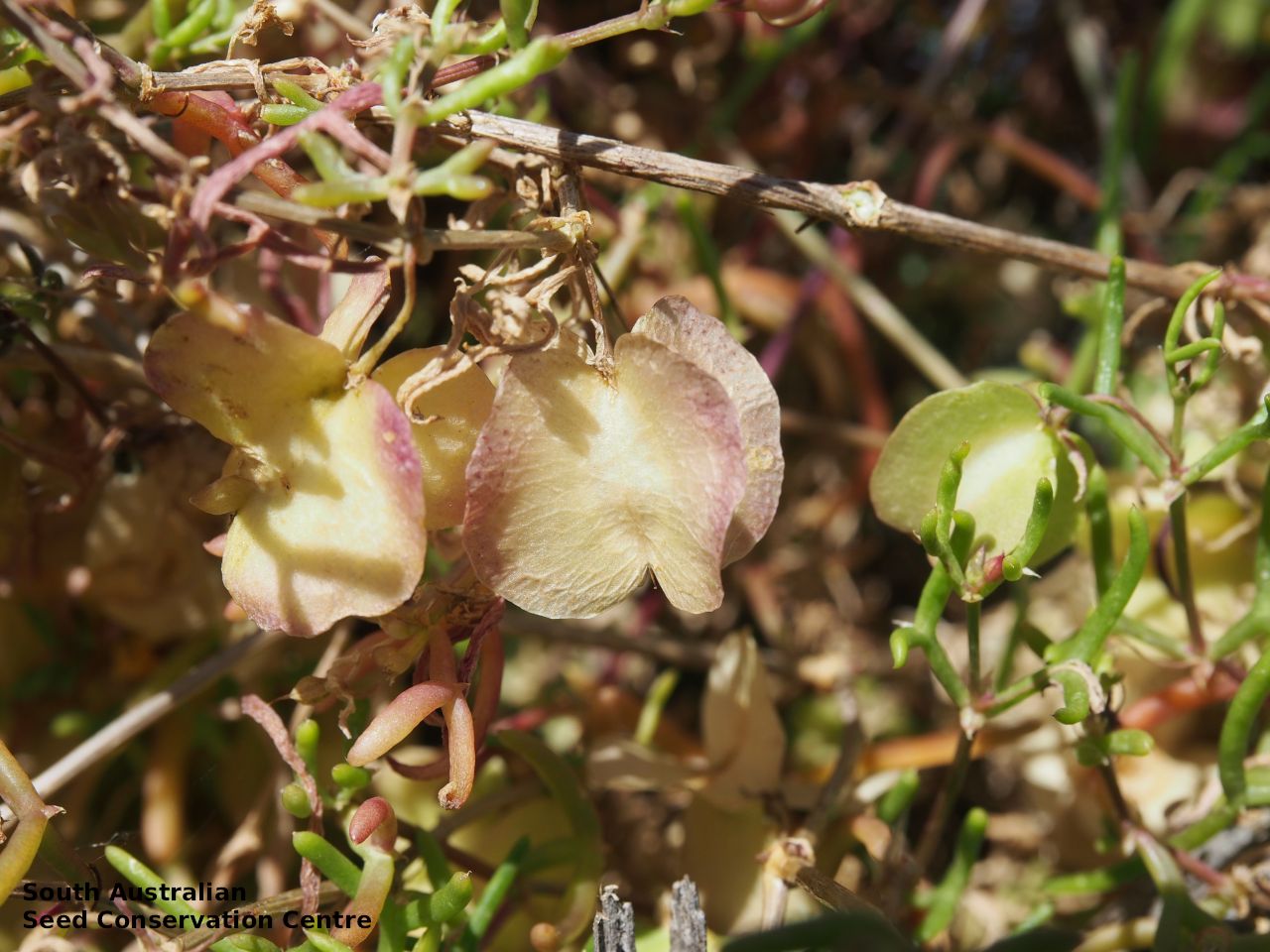
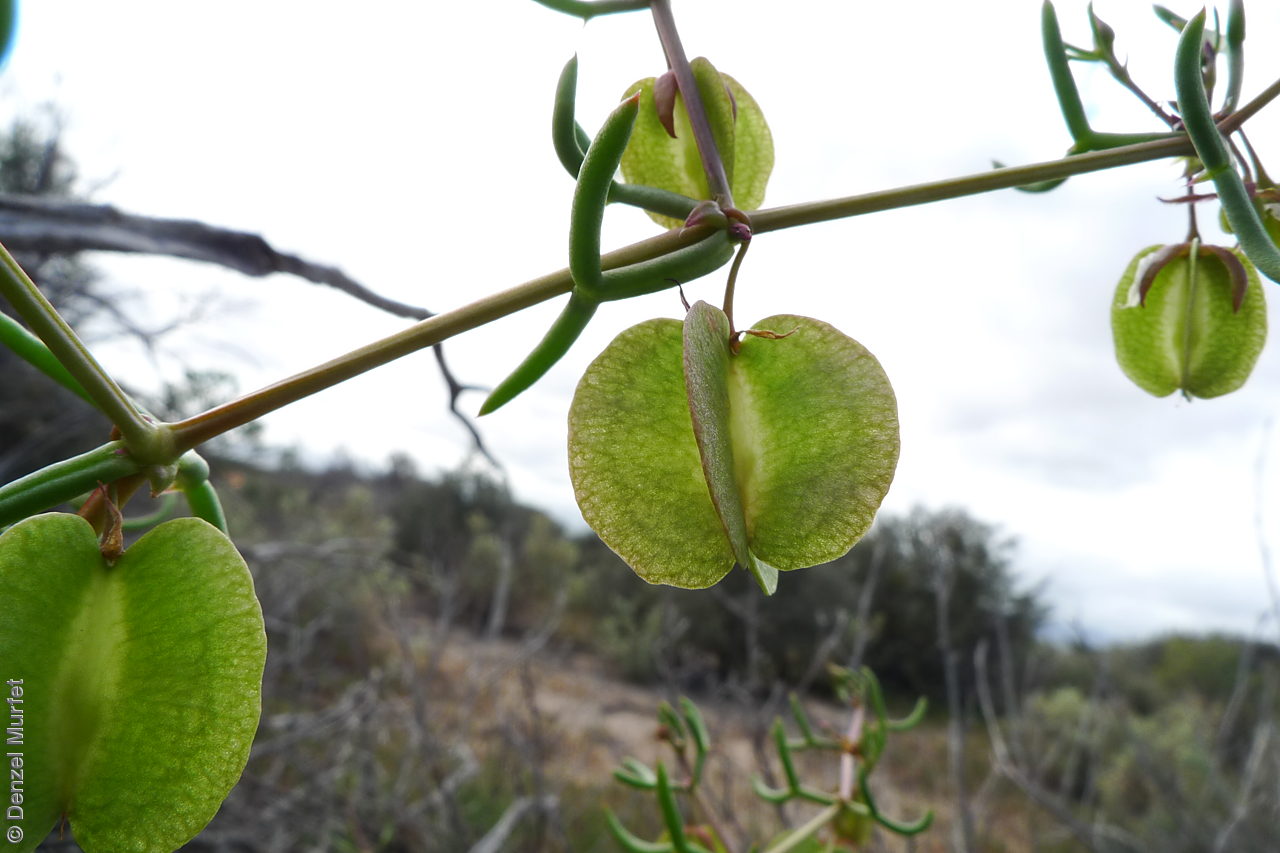
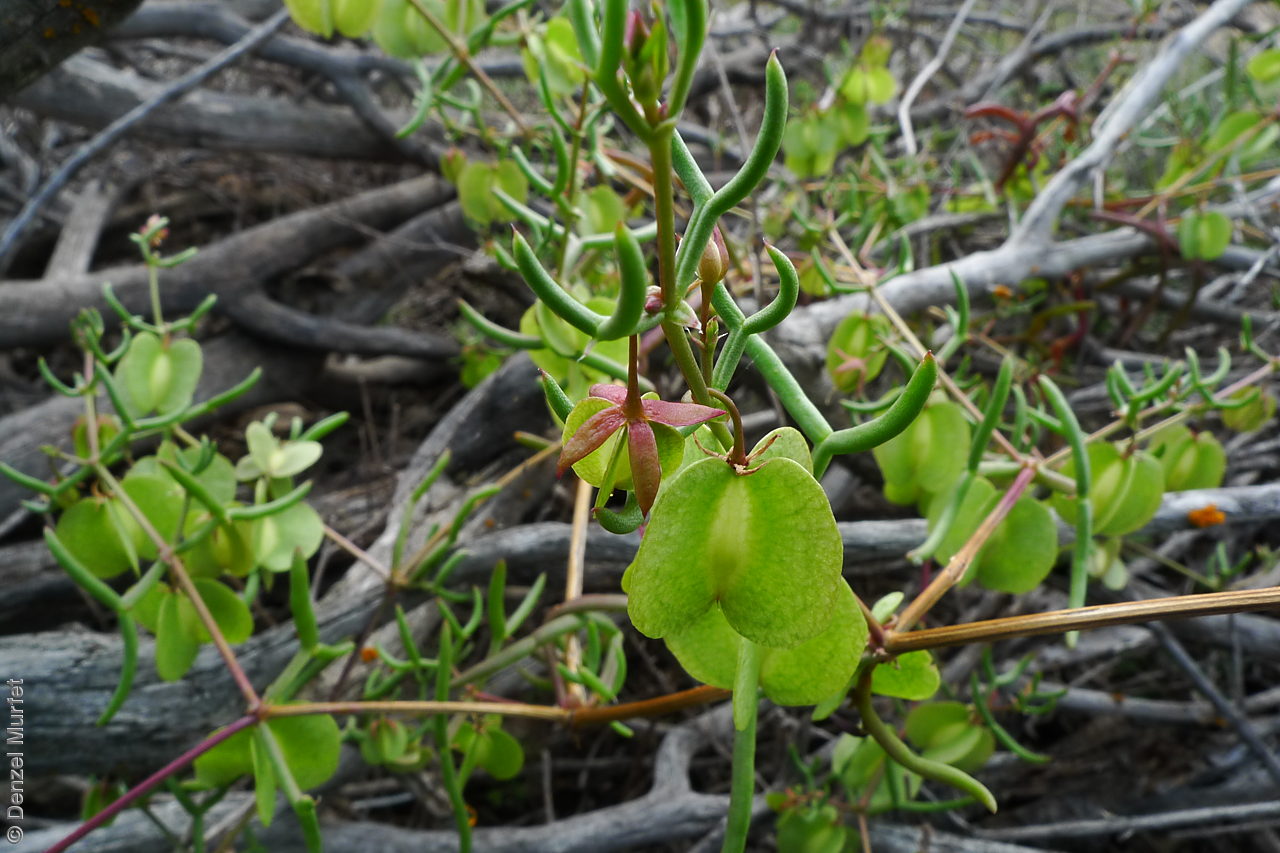
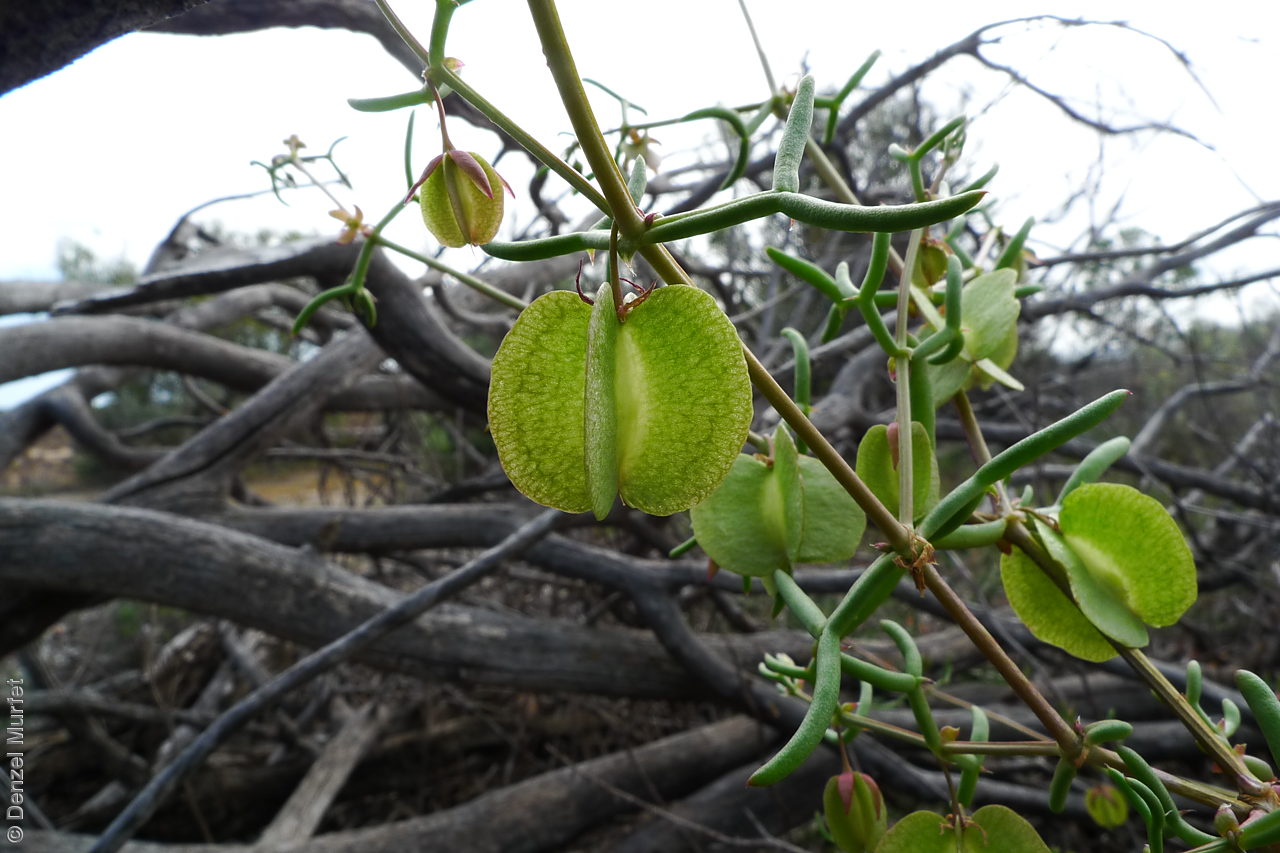
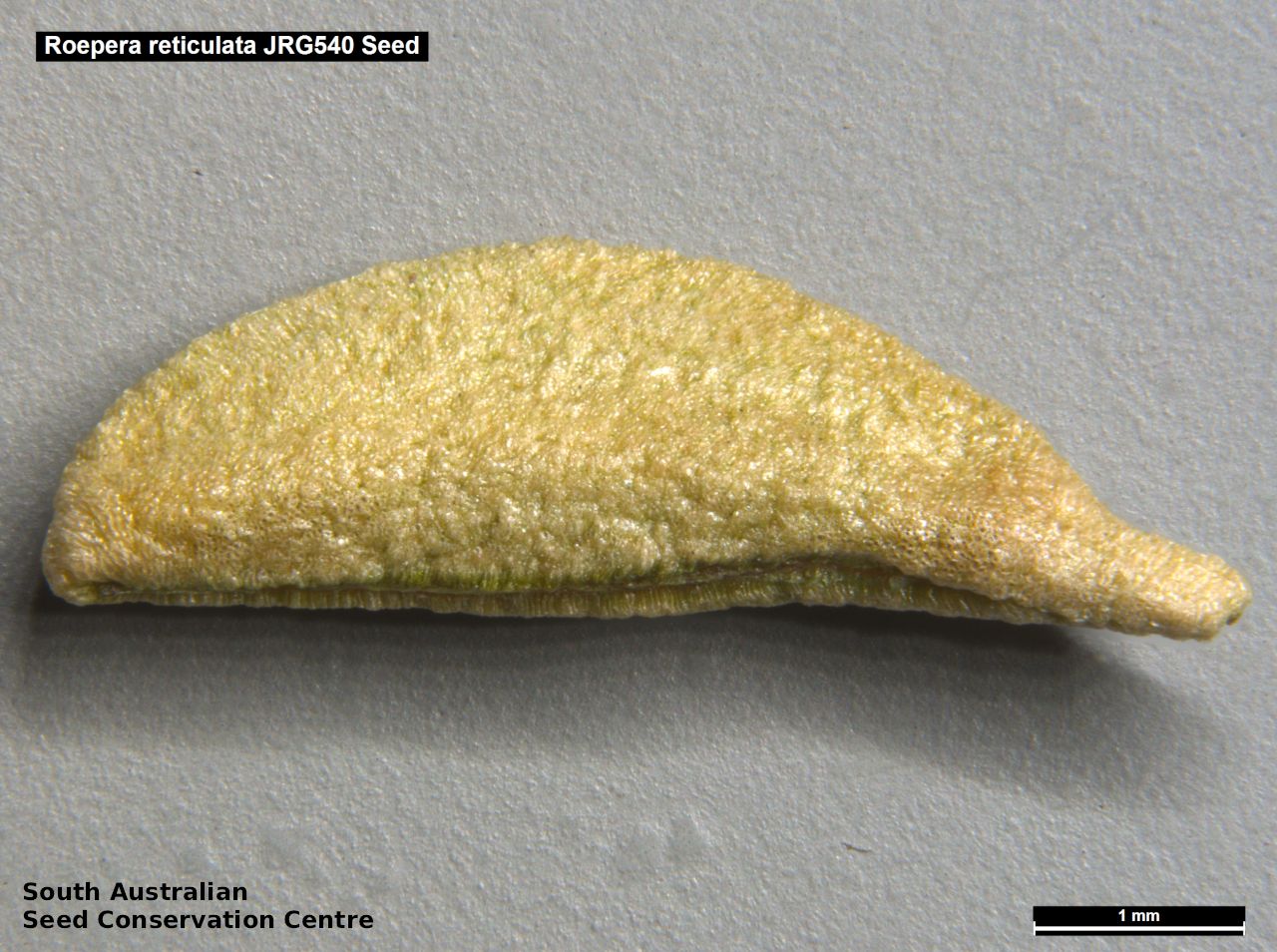
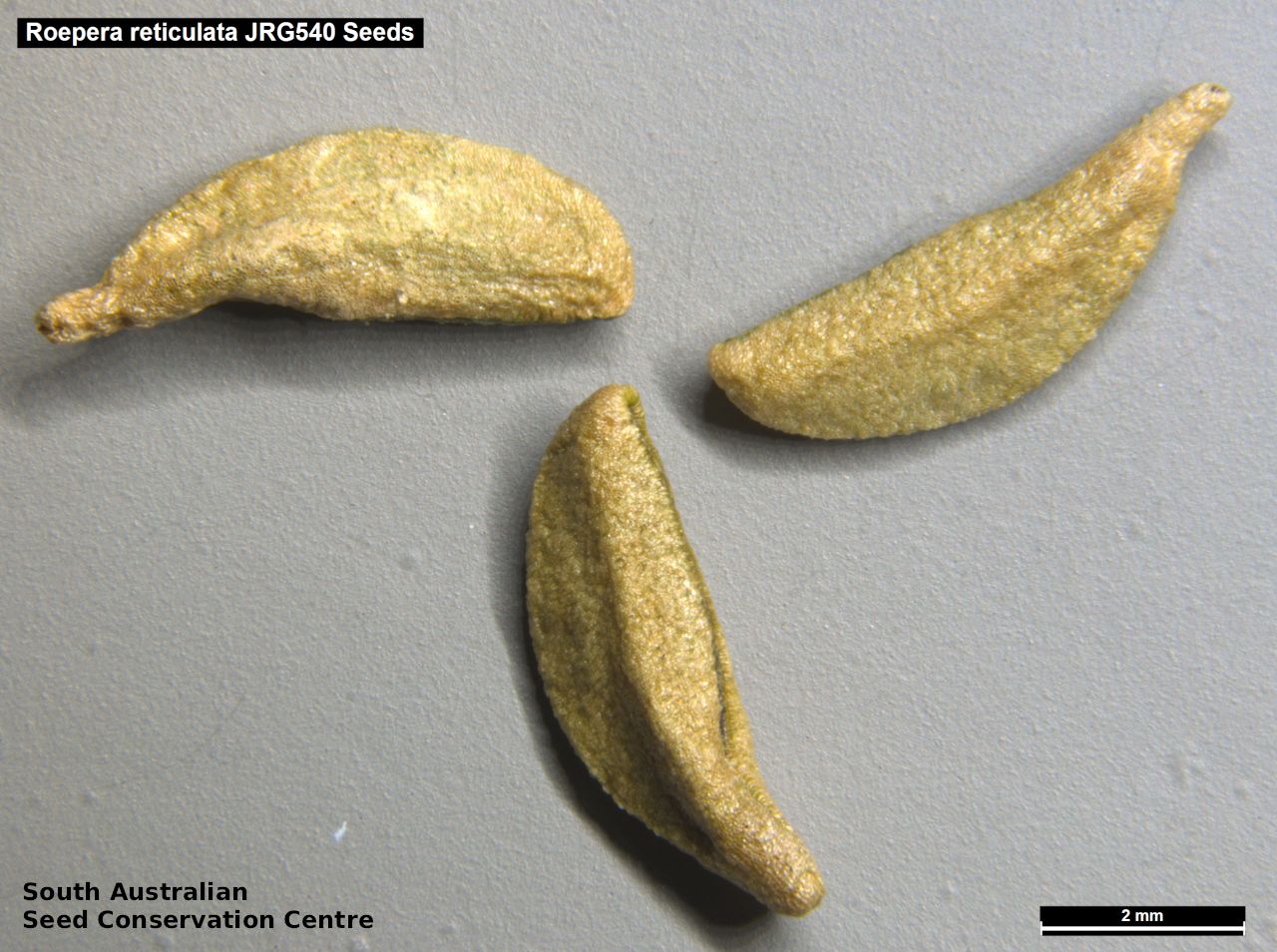

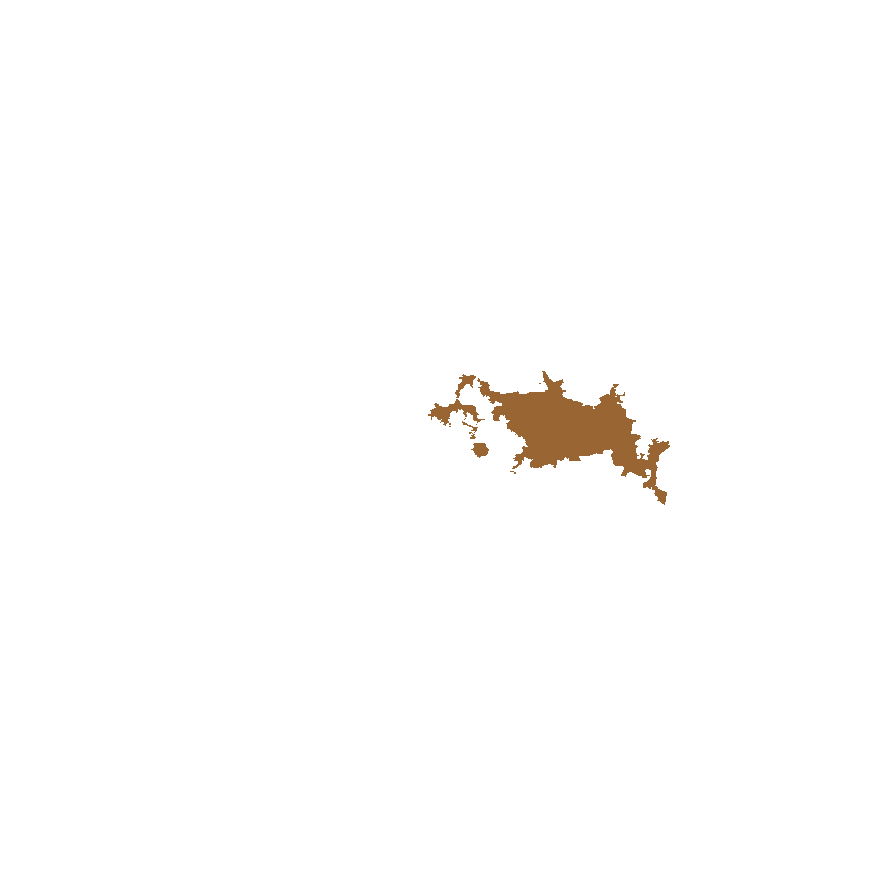
Prior names
Zygophyllum reticulatum
Zygophyllum eremaeum, partly
Zygophyllum aurantiacum, partly
Zygophyllum fruticulosum var. eremaeum, partly
Common names
Veined-fruit Twinleaf
Shrubby Twinleaf
Etymology
Roepera (formally Zygophyllum which is from the Greek 'zygon' meaning pair and 'phyllon' meaning leaf; referring to the pair of leaflets making up each leaf) is named after Johannes August Christian Roeper (1801 -1885), a German botanist and physician. Reticulata from the Latin 'reticulum' meaning a small net; referring to the reticulate pattern of the venation on the wing of the dried fruit.
Distribution and status
Found around the Port August area in South Australia, growing in mallee and spinifex on red sand over limestone. Also found in Western Australia. Native. Rare in South Australia. Uncommon in Western Australia.
Herbarium region: Eyre Peninsula
NRM region: Eyre Peninsula
AVH map: SA distribution map (external link)
Plant description
Shrubs, climbing or sprawling annual herbs to 40 cm high and 40 cm wide or sprawling in other vegetation up to 2 m high. Leaves succulent, leaflets narrowly oblong, to 25 mm long and 2 mm wide, continuous with flattened stalk, acute at the apex. Inflorescence solitary at each node with yellow, fading white flower. The characteristics of habit, leaf shape, calyx colour, flower size, style length, stigma division and fruit shape are all variable within this species. The distinguishing feature is the widely spaced, reticulate venation on the wings of the dried fruit. Flowering between August and October. Fruits are pale brown to green, sometimes with reddish edge, 4-winged capsule to 15 mm long and 22 mm broad, not breaking into single winged segment. Wings of dried fruits with a clear, widely spaced reticulate venation. Seeds are pale yellow-brown, wedge-shaped to 6 mm long and 2 mm wide. Seed embryo type is spatulate fully developed.
Seed collection and propagation
Collect seeds between October and December. Collect semi-dried and dried capsules by running your hands through the stems of the plant. Mature fruits will come off easily and will have a hard and dark seed inside each segment. Place the capsules in a tray and leave to dry for 1 to 2 weeks, depending on how green the fruit is. Then rub the dried capsules to dislodge the seeds. Use a sieve to remove the unwanted material. Store the seeds with a desiccant such as dried silica beads or dry rice, in an air tight container in a cool and dry place. seed viability is usually high.
| Location | No. of seeds (weight grams) | Number of plants | Date collected | Collection number Collection location | Date stored | % Viability | Storage temperature |
|---|---|---|---|---|---|---|---|
| BGA | 2,000 (79.65 g) | 30 | 16-Nov-2016 | JRG540 Eyre Peninsula | 1-Nov-2017 | 95% | -18°C |
Number of plants: This is the number of plants from which the seeds were collected.
Collection location: The Herbarium of South Australia's region name.
% Viability: Percentage of filled healthy seeds determined by a cut test or x-ray.